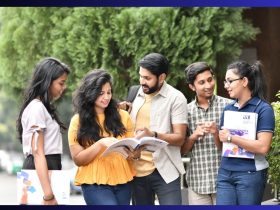New Delhi, 30 July 2025 – Union Health Minister J P Nadda told the Rajya Sabha today that the number of medical colleges in India has nearly doubled over the last decade, rising from 387 in 2014 to 780 currently. Undergraduate (UG) seats increased from 51,348 to 1,15,900, while postgraduate (PG) seats rose from 31,185 to 74,306. The expansion forms part of a broader push to improve healthcare accessibility under the National Medical Commission (NMC) and the Ayushman Bharat scheme.
What the numbers reveal
India now has 13,86,157 registered allopathic doctors and 7,51,768 registered AYUSH practitioners. The World Health Organisation recommends a doctor‑population ratio of 1:1000. Nadda said that assuming 80 per cent of practitioners in both systems are available, India’s ratio is estimated at 1:811. “Our doctor‑population ratio is improving thanks to the rapid growth of medical seats,” he noted.
Why the expansion matters
The government has invested heavily in upgrading district hospitals, converting them into medical colleges and establishing new institutions through centrally sponsored schemes. Nadda explained that public health is a state subject, but the Union government supports states through funding, capacity building, teleconsultation services and provision of medicines. The creation of new colleges aims to reduce dependence on a handful of urban centres, bringing training closer to underserved areas.
Initiatives boosting healthcare delivery
Nadda highlighted several programmes designed to improve healthcare access:
Family Adoption Programme (FAP): Integrated into the MBBS curriculum, this scheme requires medical colleges to adopt villages and students to adopt families. Students monitor vaccination schedules, menstrual hygiene, Iron and Folic Acid supplementation and healthy lifestyle practices while educating families about government health programmes.
District Residency Programme (DRP): A compulsory three‑month posting for PG students in district hospitals to strengthen healthcare delivery in rural and underserved areas.
Ayushman Arogya Mandirs (AAMs): Since its launch in 2018, 1,78,154 AAMs have been established by converting sub‑health centres and primary health centres into facilities providing comprehensive primary healthcare near people’s homes.
What experts say
Public health specialists welcome the expansion but caution that increasing seats alone won’t solve the doctor shortage. Dr Kavita Rao, professor of community medicine at AIIMS, said, “Ramping up infrastructure is essential, but we must also ensure quality training and equitable distribution of doctors. Rural postings and community engagement programmes like FAP are steps in the right direction.”
Challenges ahead
Despite the growth, India continues to face shortages of specialists and uneven distribution of doctors between urban and rural areas. Some states struggle to recruit faculty, and infrastructure in new colleges can lag behind standards. The NMC has emphasised stricter accreditation and periodic inspections to maintain quality.
Future outlook
The government plans to continue expanding seats and upgrading hospitals, with particular focus on under‑served regions. Nadda said the ministry is exploring innovative models, including public‑private partnerships and digital health initiatives, to bridge remaining gaps. Lawmakers across parties have called for monitoring to ensure that the surge in numbers translates into better healthcare outcomes.
With medical education expanding at an unprecedented pace, policymakers hope that India will achieve the WHO‑recommended doctor‑population ratio within the next few years. Follow us for more verified updates.




